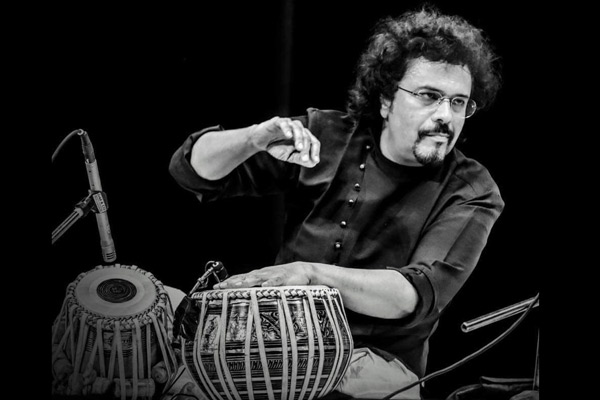For more on radio and music business news. | Click on RNMBiz

MUMBAI: “In India, we have music in our lives. Here, breaking into a song is no big deal. That is what India is all about. Hence, movie songs become popular here. We have some great songs which are viewed, even if the movie is not viewed.” - Hariharan
“When there is a marriage of cinema and music, all senses are appealed to. Cinema in India is highly influenced by theatre filled with music and dance. Navarasa has been omnipresent in dance, music and cinema.” – Hariharan
“Region-based cinema gives music directors a chance to portray a slice of that land.” – Bikram Ghosh
These are some of the comments that came up at a virtual ‘In-Conversation’ session on Music & Movies between the two music maestros - playback singer Padma Shri Hariharan and percussionist Bickram Ghosh, held during the ongoing 51st International Film Festival of India (IFFI).
The much-loved playback singer Hariharan stated, “Music in contemporary films has changed, so has society”. He said that film songs and background scores in the 50s were filled with Indian classical genres. Commenting on the evolution of music in Indian cinema, Bickram Ghosh said: “When we gained independence, there was an accentuation on being Indian in the films of that era. Hence, audience were given a trajectory of Indianness by means of Indian classical music.” Speaking about the later periods, Hariharan added: “Then came the 70s, when Hindi cinema was hit by a wave of ‘real cinema’ or ‘arthouse cinema’, which had very few songs. Soundscape changed dramatically in the 90s. In this period, every bit of sound became audible, giving a respite to singers. Voice clarity was there in the 60s and 70s, 80s saw a lot of orchestration and in the 90s, voice clarity totally disappeared.”
“In Naushad’s Ganga-Jamuna, he used a lot of folk music. The whole background score and a symphony of the film was based on Lalit and Marwa Ragas. It added depth to the scenes. There was a harmony in that period.” - reflected the celebrated playback singer.
In this context, Bickram Ghosh observed that with the coming of A R Rahman, there was a big turn of events; a lot of instruments started being used.
Legends like Ilayaraja and R D Burman also came up in the virtual tete-a-tete. Hariharan said, “In Ilayaraja’sAnnakali, there was an amazing harmony between Tamil folk music and Carnatic music”. Bickram Ghosh agrees, “When Ilayaraja was ruling the South, Panchamda was the king of music in Mumbai. He westernized a lot of tracks. R D Burman converged Afro-Cuban and Latin music.”
“The creativities used by R.D. Burman in certain films are a heritage for Indian music”, said Bickram Ghosh. “In Satte Pe Satta, Amitabh Bachchan’s character gurgled in a tune. In Sholay, Shantaparasadji’s tabla in the ChalDhanno Chal sequence simply created magic. The song Chura Liya Hai Tumne Jo Dil Ko in Yaadon Ki Baaraat is distinctive for the sounds used, while Teesri Manzil is another film noted for the unique sounds used to create music.”
“In the 70s, South India started loving Bollywood music”, said Hariharan.
The legendary film-maker and outstanding music composer Satyajit Ray’s name also figured in the conversation. “He imported a lot of South Indian sounds into Bengali cinema. He used the whole glamour of South Indian music in his film Goopy Gain Bagha Bain.” - said Bickram Ghosh.
“I find that use of lip syncing in Indian cinema has come down. The modulatory note in film-songs too is reducing. A lot of scores are produced by electronic music nowadays”, Hariharan added. He also feels, “While certain songs sound beautiful while singing live, the sound after dubbing is different”.
About present-day films and music, Bickram Ghosh added on a positive note, a lot of Hindi films are set in different regions of the country. As a result, the folk and local music of various parts of our diverse country are gaining popularity. Hariharan agreed. He said, “Our huge cultural canvas in India must be utilized”. A.R. Rahman has done it brilliantly. The film Lagaan is a beautiful example of it, stated the music maestro.
Bickram Ghosh shares his experience of composing scores for the thriller Torbaaz. The film has a setting of Afghanistan for which the music needed middle-eastern sounds. “However the Director did not want an audio-map of that region. It allowed me to use a lot of different indigenous instrumental sounds to even create a feel of that region”.
Hariharan feels, “Subtleties of music are missing in present times, which is essential for one’s psyche. Shrutiaspect of a song goes missing nowadays”. Bickram Ghosh said on similar lines, “Mental gyration went away with dance beats”.
On a concluding note, both musicians said that all types of music should exist in movies. “You need variety in songs and modulation.”